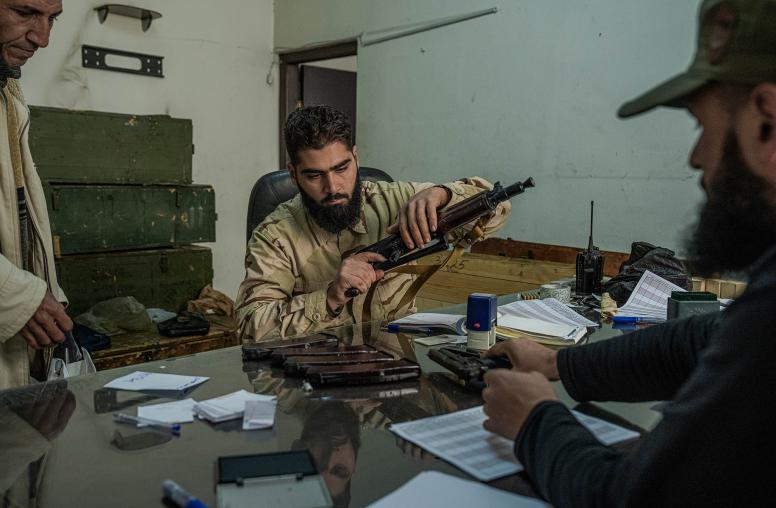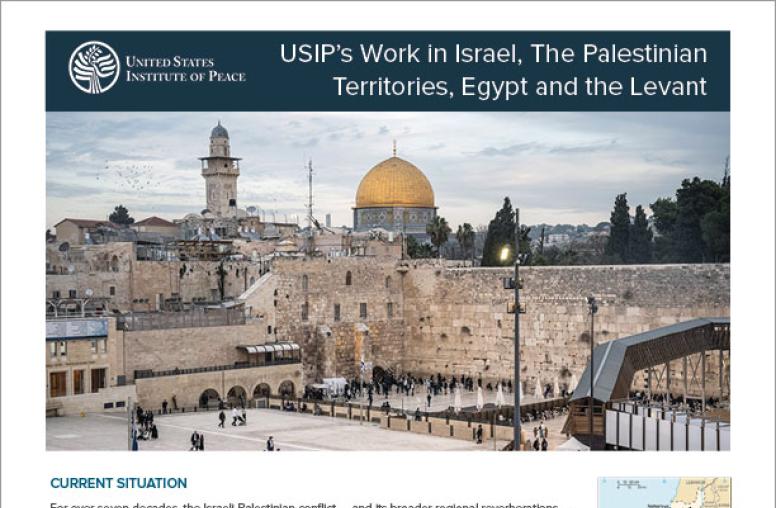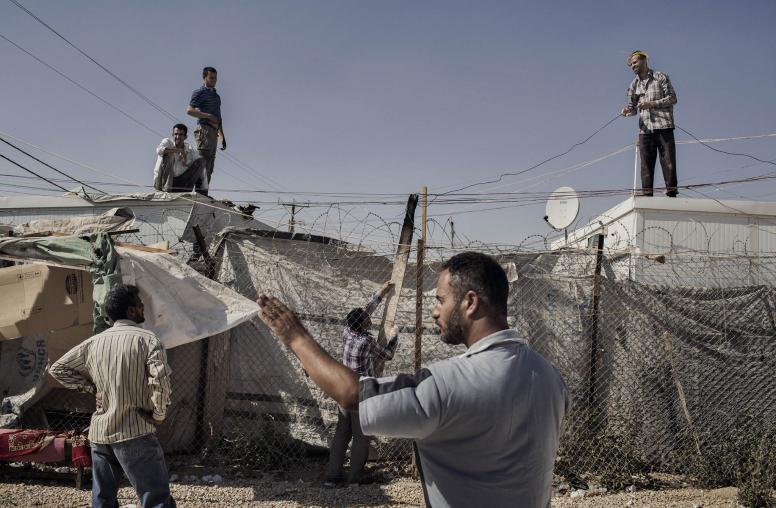Amid Humanitarian Crisis, Syrian Regime Intensifies Idlib Offensive
The Assad regime’s latest attack on Idlib could provoke the worst humanitarian catastrophe of the Syrian conflict.
Since December 1, the Assad regime—backed by Russia and Iranian-allied militias—has intensified its military offensive on Idlib, one of the last remaining rebel strongholds in Syria. The regime’s escalating attacks have spurred massive civilian displacement, deepening international concerns about an impending humanitarian catastrophe. Alarmed by the mounting violence, Turkey has broadened its military involvement in Idlib as well. USIP’s Mona Yacoubian examines the impact of the Syrian regime’s latest offensive on Idlib.

Of the three million people in Idlib province, U.N. sources estimate more than one million have been displaced—with approximately 586,000 displaced since December 1, and the number is rising rapidly. With Turkey and other nations closing their borders, and harsh winter conditions in the region, what is the humanitarian situation in Idlib?
The humanitarian situation in Idlib is extremely dire. The Syrian regime’s intensified bombardment of areas in southern and eastern Idlib has sparked large-scale displacement. Concerns are mounting that the regime could expand its offensive even further north to Idlib City. With the Turkish border closed, these civilians—many of whom have been displaced as many as 10 times since the beginning of the conflict—have nowhere else to go. They are forced to stay in makeshift shelters in open-air settings, often exposed to the elements.
Tragically, children have borne a disproportionate impact, with the United Nations estimating that at least 300,000 children have been displaced since early December, roughly 6,500 children every day. It is estimated that more than 1,500 civilians have been killed since the regime offensive first started in May 2019. U.N. Secretary General Antonio Guterres, noting deep concern, has called for an immediate cease-fire. Unfortunately, an end to the hostilities does not appear imminent. If anything, the violence is intensifying as more actors get drawn into the fray.
What role is Russia playing in the Assad regime’s offensive on Idlib? What about the role of Iranian-backed militias?
Russia has played a key role in supporting the Assad regime’s Idlib offensive with significant air power. Russian warplanes reportedly undertook more than 200 airstrikes over just three days last week, according to U.S. Special Envoy for Syria James Jeffrey. Some estimate that Russia launched more than 750 airstrikes in January alone. With Russian backing, the regime seeks to force civilians out of key portions of Idlib along the strategic M4 and M5 highways. Russian and Syrian forces have routinely bombed hospitals and other civilian targets—in violation of international law—as part of a de-population strategy, emptying towns and villages in order to retake them.
Iranian-backed militias are also reportedly playing a role in the current offensive. However, their numbers and the nature of their engagement are not entirely clear. For example, three Hezbollah fighters recently were killed in the fighting, although Hezbollah’s specific role in the offensive remains murky. Other reports suggest Afghan Shia fighters connected to Iran also may have joined the battle.
Despite warming relations, Turkey has warned Russia against further offensives and threatened a military incursion into Syrian territory. If the offensive into Idlib continues, what would a Turkish incursion look like, and what could be the fallout between Turkey and Russia?
Turkey has expressed alarm at the Russian-backed incursion, voicing deepening concerns over the humanitarian catastrophe unfolding in Idlib. As the offensive intensifies, Turkey has been drawn directly into the fray. Ankara launched airstrikes against Syrian regime targets when a Turkish convoy was targeted by Syrian regime forces, killing eight Turkish soldiers. Turkish President Erdogan has vowed to retaliate further should Turkish forces be targeted again.
Idlib has long been a source of tension between Turkey and Russia. The two countries agreed to establish a de-militarized zone in September 2018 in order to forestall a regime offensive. The agreement eroded significantly when the Assad regime renewed an offensive against Idlib last May. Russian President Putin met with President Erdogan in Turkey last month, reaffirming the September 2018 agreement. Yet, the offensive against Idlib was already underway. While Russian-Turkish tensions over Idlib may increase further, both countries will work to ensure that the crisis does not derail their broader cooperation in Syria.
What would be the implications for Syria’s civil war if the regime does take Idlib?
Should it continue unabated, the regime’s latest offensive on Idlib will provoke the worst humanitarian catastrophe of the nearly decade-long Syrian conflict. The current offensive in Idlib is perhaps the most intense battle against a rebel held stronghold since the Syrian regime’s December 2016 onslaught against eastern Aleppo—which essentially turned the tide of the civil war in the regime’s favor. The numbers of displaced continue to escalate rapidly, forcing large numbers of civilians to seek refuge in an already overcrowded area of northern Idlib. With Turkey refusing to open its borders to more Syrian refugees and the border area too small to sustain a new influx of displaced civilians, the displaced will essentially be trapped in a zone too small to sustain them. Pressure will build to allow their transit onward—either to Turkish-controlled zones in Syria, into Turkey, or even on to Europe.
The offensive will expand the Assad regime’s control over one of the last rebel strongholds in western Syria, further consolidating the regime’s grip on western Syria. While conventional wisdom has held that the regime would move in piecemeal fashion, the ferocity of the current offensive potentially suggests otherwise. Unconfirmed reports that the regime could push its offensive into Idlib City has provoked panic among civilians there who are fleeing in growing numbers. At a minimum, the regime is focused on regaining control of the M4 and M5 highways as well as key towns in southern and eastern Idlib. Using aerial bombardment as well as artillery, the regime and its allies are effectively depopulating these strategic zones, preparing for a regime takeover.


